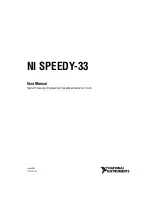
OPTIMOD-FM DIGITAL
TROUBLESHOOTING
5-3
The 8300 has two systems that fight this problem. The
compressor gate
freezes the
gain of the AGC and compressor systems whenever the input noise drops below a
level set by the threshold control for the processing section in question, preventing
noise below this level from being further increased.
There are two independent compressor gate circuits in the 8300. The first affects the
AGC and the second affects the Multiband Compressor. Each has its own threshold
control. (See
M
B
G
ATE
on page 3-49.)
In the Multiband structure,
dynamic single-ended noise reduction
(see
D
WNEXP
T
HR
on page 3-50) can be used to reduce the level of the noise below the level at which
it appears at the input.
If you are using the 8300's analog input, the overall noise performance of the sys-
tem is usually limited by the overload-to-noise ratio of the analog-to-digital con-
verter used by the 8300 to digitize the input. (This ratio is better than 108 dB.) It is
important to drive the 8300 with professional levels (more than 0 dBu reference
level) to achieve adequately low noise. (Clipping occurs at +27 dBu.)
The 8300's AES3 input is capable of receiving words of up to 24 bits. A 24-bit word
has a dynamic range of approximately 144 dB. The 8300's digital input will thus
never limit the unit's noise performance even with very high amounts of compres-
sion.
If an analog studio-to-transmitter link (STL) is used to pass unprocessed audio to the
8300, the STL's noise level can severely limit the overall noise performance of the
system because compression in the 8300 can exaggerate the STL noise. For example,
the overload-to-noise ratio of a typical analog microwave STL may only be 70-75 dB.
In this case, it is wise to use the Orban 8200ST Studio AGC to perform the AGC func-
tion prior to the STL transmitter and to control the STL's peak modulation. This will
optimize the signal-to-noise ratio of the entire transmission system. An uncom-
pressed digital STL will perform much better than any analog STL. (See
Studio-
Transmitter Link,
starting on page 1-13.)
Whistle on Air, Perhaps Only in Stereo Reception
The most likely cause is oscillation in the analog input or output circuitry. If the oscil-
lation is in the output circuitry and is between 23 and 53 kHz, it will be detected in a
receiver’s stereo decoder and translated down into the audible range.
If you encounter this problem, check the analog or digital outputs with a spectrum
analyzer to see if the spurious tone can be detected here. If it appears at both out-
puts, it is probably an input problem. If it only appears at the analog output, then it
is likely a problem with the left/right DACs or other analog circuitry. If it appears
only when you use the composite output, then it is likely a problem in the composite
DACs or output amplifiers.
A whistle could also be caused by power supply oscillation, STL problems, or exciter
problems.
Summary of Contents for 8300J
Page 1: ...Operating Manual OPTIMOD FM 8300 Digital Audio Processor Version 2 1 Software...
Page 7: ...Operating Manual OPTIMOD FM 8300 Digital Audio Processor Version 2 1 Software...
Page 24: ......
Page 94: ...2 46 INSTALLATION ORBAN MODEL 8300 This page intentionally left blank...
Page 190: ......
Page 204: ......
Page 246: ......
Page 247: ...OPTIMOD FM DIGITAL TECHNICAL DATA 6 29...
Page 254: ...6 36 TECHNICAL DATA ORBAN MODEL 8300 CPU Module...
Page 260: ...6 42 TECHNICAL DATA ORBAN MODEL 8300 8300 RS232 BOARD PARTS LOCATOR...
Page 262: ...6 44 TECHNICAL DATA ORBAN MODEL 8300 8300 POWER SUPPLY PARTS LOCATOR...
Page 264: ...6 46 TECHNICAL DATA ORBAN MODEL 8300 8300 I O BOARD PARTS LOCATOR...
Page 270: ...6 52 TECHNICAL DATA ORBAN MODEL 8300 DSP BOARD PARTS LOCATOR DRAWING 32170 000 14...
Page 278: ...6 60 TECHNICAL DATA ORBAN MODEL 8300 8300 DISPLAY BOARD PARTS LOCATOR...
Page 279: ...OPTIMOD FM DIGITAL TECHNICAL DATA 6 61 DISPLAY BOARD...
















































